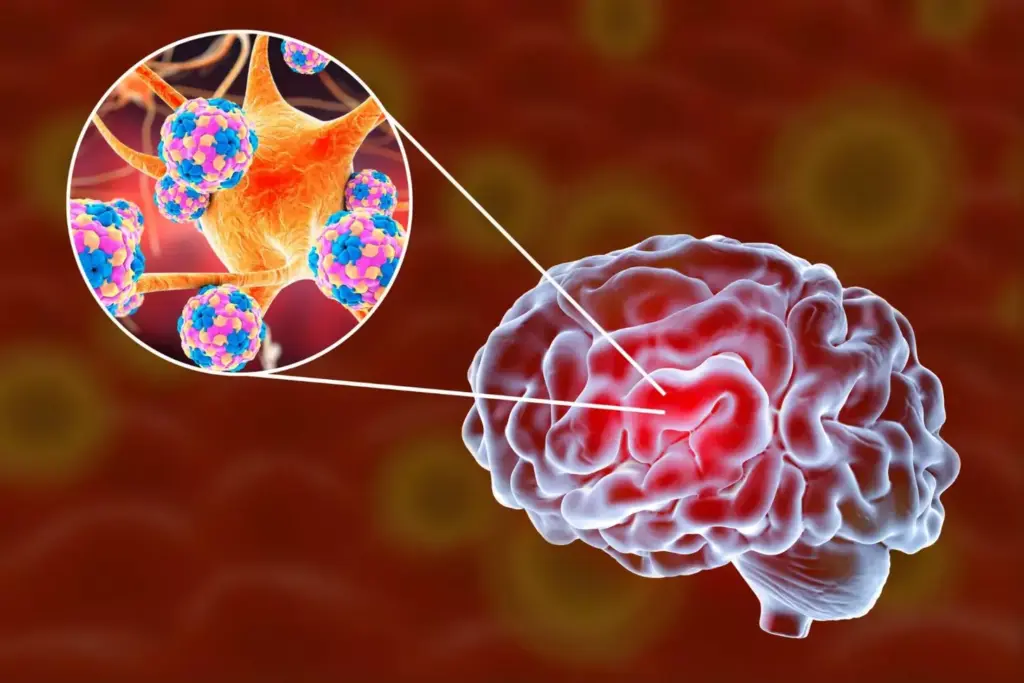Last Updated on November 26, 2025 by Bilal Hasdemir

Dealing with tumor excision can be scary. But, thanks to new neurosurgery methods, treatments are now more precise and effective.
At Liv Hospital, we use the latest technology, like computer-assisted surgery, for brain tumor surgery. Our team is dedicated to top-notch healthcare. We also offer full support for patients from abroad.
New advancements in neurosurgery have greatly improved brain cancer surgery results. We focus on each patient, making our methods fit the tumor’s location and type.
Key Takeaways
- Advanced surgical techniques improve tumor removal outcomes.
- Computer-assisted surgery ensures precise tumor excision.
- Personalized care is key for the best patient recovery.
- Liv Hospital provides full support for international patients.
- Effective treatment plans are tailored to the tumor’s location and nature.
Understanding Brain Tumors and Their Impact
Medical research has made big strides in understanding brain tumors. These tumors can be harmless or dangerous. They need a detailed approach for diagnosis and treatment.
Types and Classifications of Brain Tumors
Brain tumors are sorted by type, grade, and where they are. The main types are:
- Primary Brain Tumors: These start in the brain and can be harmless or dangerous.
- Secondary Brain Tumors: These spread from other parts of the body to the brain.
Knowing the type and classification of brain tumors is key for treatment. Recent research shows this knowledge greatly affects patient results.
| Tumor Type | Characteristics | Common Treatment Approaches |
|---|---|---|
| Benign | Non-cancerous, slow-growing | Surgery, observation |
| Malignant | Cancerous, fast-growing | Surgery, radiation, chemotherapy |
Signs, Symptoms, and Diagnostic Procedures
The symptoms of brain tumors depend on their location and size. Common signs include headaches, seizures, and changes in thinking. Doctors use imaging tests and neurological checks to diagnose.
- MRI (Magnetic Resonance Imaging): Gives detailed brain images.
- CT (Computed Tomography) Scan: Shows where and how big the tumor is.
- Biopsy: Examines tumor tissue to find out its type and grade.
We use these tools to create a treatment plan that fits the patient’s needs.
Preparing for Brain Tumor Surgery
Our team is here to help you get ready for brain tumor surgery. We make sure you’re both physically and emotionally prepared. This means doing a series of tests and evaluations to check if you’re ready for the surgery.
Pre-Surgical Evaluation and Testing
Before surgery, you’ll go through a detailed pre-surgical check-up. This includes tests like MRI, CT scans, and neurological exams. These help us see how big the tumor is, where it is, and how it affects the brain around it.
Key Tests and Evaluations:
- MRI and CT scans to visualize the tumor
- Neurological exams to assess cognitive and motor functions
- Blood tests to evaluate overall health
| Test/Evaluation | Purpose |
|---|---|
| MRI/CT Scans | Visualize tumor size and location |
| Neurological Exams | Assess cognitive and motor functions |
| Blood Tests | Evaluate overall health |
Patient Preparation Guidelines
We give you specific instructions to follow before surgery. These include how to manage your medications, what to eat, and how to take care of yourself before the operation.
Following these guidelines closely is very important. It helps reduce risks and improves your chances of a good outcome.
Emotional and Psychological Preparation
Getting ready for surgery isn’t just about your body. Your mind and emotions are also key. Our team offers support and resources to help you deal with the stress and anxiety of surgery.
Research shows that proper preparation is vital for a successful surgery. Knowing what to expect and being ready can help lower your anxiety. This makes your experience better overall.
Brain Cancer Removal Through Craniotomy
Craniotomy is a top choice for removing brain cancer. It involves temporarily taking off a part of the skull. This lets our neurosurgeons safely remove the tumor.
Standard Craniotomy Procedure
The first step is making a precise cut in the scalp. Then, a section of the skull is removed temporarily. This exposes the dura mater, a protective layer around the brain.
We then open the dura to reach the tumor. Advanced imaging helps us find the tumor and plan the safest way to remove it.
Brain Mapping for Functional Preservation
We use advanced brain mapping to protect important brain functions. This includes areas for speech, movement, and sensation. By mapping these areas, we can avoid damaging them during surgery.
Risks and Success Rates
Craniotomy is effective but comes with risks like infection and bleeding. Our team works hard to reduce these risks. The success rate depends on the tumor type, location, and the patient’s health.
| Procedure Aspect | Description | Benefits |
|---|---|---|
| Standard Craniotomy | Temporary removal of a skull portion to access the tumor | Direct access to the tumor for effective removal |
| Brain Mapping | Identifying critical brain areas for functional preservation | Minimizes risk of neurological damage |
| Success Rates | Varies based on tumor type, location, and patient health | High success rate with proper patient selection and surgical expertise |
Our team is dedicated to top-notch care and the best outcomes for patients. We focus on brain cancer removal through craniotomy.
Awake Craniotomy Techniques
The awake craniotomy procedure is a complex method in neurosurgery. It treats brain tumors while keeping important brain functions working. This method is key when the tumor is close to areas that control speech, movement, or other vital brain tasks.
When Awake Surgery Is Recommended
We suggest awake craniotomy for patients with tumors near important brain areas. This way, our surgeons can watch the patient’s brain functions live during surgery. This helps avoid harming these critical spots.
Choosing awake craniotomy comes after careful checks and tests. These include:
- Detailed imaging studies to find the tumor’s location and how close it is to key brain areas.
- Neurological tests to see how the brain is working now and spot any risks.
The Procedure Experience
In an awake craniotomy, the patient stays awake and can talk. This lets our team talk to them and keep an eye on their brain functions as they go. This feedback is key for safely removing the tumor.
To make the procedure comfortable and successful, we:
- Give local anesthesia to numb the scalp and lessen pain.
- Use gentle sedation to help the patient relax but stay able to respond to tests.
- Apply advanced brain mapping to spot and keep safe important brain areas.
Monitoring Brain Function During Surgery
Keeping an eye on brain function is vital during awake craniotomy. Our neurosurgeons use many ways to check the patient’s brain status live, including:
- Continuous EEG to watch brain activity.
- Direct cortical stimulation to map brain functions and find areas to save.
- Neurological exams to test speech, motor skills, and other key functions during surgery.
By using these advanced methods, we can do a more precise brain tumor resection. This lowers the chance of brain problems after surgery and helps patients do better.
Minimally Invasive Surgical Options
Neurosurgery has made big strides with new, less invasive ways to remove tumors. These methods are safer and let patients recover faster. They help us focus on both treating the tumor and improving our patients’ long-term health.
Endoscopic Tumor Removal
Endoscopic tumor removal uses a small camera and tools to remove tumors through small cuts. It’s a precise way to take out tumors with little harm to the brain around them.
Benefits of Endoscopic Tumor Removal:
- Smaller cuts mean less scarring
- Lower risk of infections and problems
- Patients stay in the hospital less and recover quicker
- They feel less pain after surgery
Laser Ablation Procedures
Laser ablation is a new way to treat brain tumors. It uses a laser to heat and kill tumor cells. It’s great for tumors that are hard to get to or in sensitive brain areas.
We use advanced laser ablation techniques to target tumor cells well. This helps keep healthy brain tissue safe.
Advantages of Laser Ablation:
| Procedure | Benefits |
|---|---|
| Laser Ablation | Minimally invasive, precise, and effective |
| Endoscopic Removal | Less scarring, reduced risk of complications |
Endoscopic and laser ablation are big steps forward in treating brain tumors. By picking the best method for each patient, we can improve their care and life quality.
Cutting-Edge Surgical Technologies
We lead in neurosurgical innovation, using top technologies for brain tumor surgery. Our goal is to give patients the safest and most effective treatments. We keep up with the latest in neurosurgical techniques.
Computer-Assisted Navigation Systems
Computer-assisted navigation systems are key in modern neurosurgery. They help our surgeons precisely locate tumors and navigate the brain’s complex anatomy. Advanced imaging data lets us plan the best surgical approach, reducing damage to brain tissue.
The benefits of these systems include:
- Improved accuracy in tumor localization
- Enhanced safety through better navigation
- Reduced risk of complications
Intraoperative Imaging Advancements
Intraoperative imaging, like MRI and CT scans, lets us assess the extent of tumor removal during surgery. This is key for removing all tumor tissue while keeping vital brain structures safe.
Key benefits of intraoperative imaging are:
- Real-time feedback on tumor removal
- Immediate adjustments to surgical strategy
- More confidence in tumor removal
Future Directions in Neurosurgical Technology
Neurosurgical technology is evolving, with advancements in AI, robotics, and personalized medicine. These innovations promise to improve brain tumor surgery outcomes.
Future developments might include:
- AI for better surgical planning
- Robotic-assisted surgery for precision
- Personalized treatments based on genetic data
By embracing these advancements, we aim to offer our patients the best care and outcomes in brain tumor treatment.
Managing Inoperable Brain Tumors
When brain tumors can’t be removed, doctors look for other ways to help. These tumors are hard to treat because of where they are, how big they are, or the patient’s health.
Determining When Tumors Are Inoperable
Doctors decide if a tumor is inoperable after checking it carefully. They look at where the tumor is, how close it is to important parts, or if there are many tumors.
Diagnostic imaging is key in this process. MRI and CT scans give detailed info about the tumor.
Stereotactic Radiosurgery Options
Stereotactic radiosurgery (SRS) is a top choice for inoperable tumors. It uses precise, strong radiation to target the tumor without harming nearby healthy tissue.
This method is great for tumors that are hard to reach or for patients who can’t have regular surgery because of health issues.
Combined Treatment Approaches
For many, a combined treatment approach works best. This might include SRS with chemotherapy, targeted therapy, or whole-brain radiation therapy.
The right mix of treatments depends on the tumor type, size, and location, and the patient’s health and wishes.
Customizing the treatment plan helps doctors manage inoperable brain tumors more effectively.
Recovery Journey After Brain Tumor Surgery
After brain tumor surgery, patients start a recovery journey. This journey includes different stages of care and rehabilitation. It’s important for getting stronger, managing complications, and improving quality of life.
Immediate Post-Operative Phase
The first days after surgery are very important. Post-operative care focuses on managing pain, watching for complications, and checking if the patient is healing well. We offer detailed care during this time, including:
- Managing pain effectively
- Monitoring neurological status
- Preventing and managing possible complications
Effective pain management is a top priority. We use medicines and other methods to keep patients comfortable. Our team watches the patient’s brain function closely to catch and fix any problems quickly.
Rehabilitation and Therapy Programs
Rehabilitation is a big part of getting better. It helps patients regain strength, move better, and think more clearly. Rehabilitation programs are made just for each patient. They might include physical, occupational, and speech therapy.
Our rehab team works with patients to create plans that meet their needs and goals. This teamwork helps patients get the support they need for the best recovery.
Long-term Monitoring and Quality of Life
Long-term care is key for managing surgery’s long-term effects and improving quality of life. We offer ongoing support and check-ups, including regular doctor visits and tests as needed.
We aim to help patients live a good life after surgery. This means taking care of their medical needs and also their emotional and mental health. We help patients find ways to stay healthy and happy.
Conclusion
Recent advances in neurosurgery have greatly improved brain tumor treatment. This brings new hope to patients all over the world. At Liv Hospital, we offer the latest in brain tumor treatment, including advanced surgical methods.
We are committed to personalized care and support for our patients. We know that treating brain tumors can be tough. So, we’re here to help every step of the way.
Our focus is on top-notch neurosurgical care and advanced treatments. Our team works hard to get the best results for our patients. We’re proud to be part of their journey to recovery.
We aim to make a real difference in the lives of those with brain tumors. By combining our expertise with a patient-first approach, we hope to improve their lives significantly.
FAQ
What are the different types of brain tumor surgery?
We use several surgical methods. These include craniotomy, awake craniotomy, endoscopic tumor removal, and laser ablation. Each method is chosen based on the tumor’s type and location.
How is brain tumor surgery performed?
Our surgeons use advanced technology. This includes computer-assisted navigation systems and intraoperative imaging. These tools help them locate and remove tumors carefully, avoiding damage to the brain.
What is the difference between craniotomy and minimally invasive surgery?
Craniotomy requires removing a part of the skull to access the tumor. Minimally invasive surgery, like endoscopic tumor removal, uses smaller incisions and special tools. This approach aims to cause less damage.
What is awake craniotomy, and when is it used?
Awake craniotomy is used for tumors near important brain areas. This technique keeps the patient awake. It allows the surgeon to check brain function in real-time, helping to preserve critical areas.
Can all brain tumors be removed surgically?
Not all tumors can be removed surgically. Some tumors are inoperable or have other complications. In these cases, we look at other treatments like stereotactic radiosurgery or combined approaches.
What is the recovery process like after brain tumor surgery?
After surgery, we provide detailed care. This includes rehabilitation and therapy programs. Our goal is to help patients regain strength and improve their quality of life.
How do you determine if a brain tumor is benign or malignant?
We use various diagnostic tests. These include imaging and histopathological examination. These help us understand the tumor’s nature and plan the best treatment.
What are the risks associated with brain tumor surgery?
Brain tumor surgery has risks, but our team works hard to minimize them. We discuss the possible risks and benefits with patients. This ensures they make informed decisions.
How do you support international patients undergoing brain tumor surgery?
At Liv Hospital, we offer top-notch healthcare to international patients. We provide personalized care and guidance throughout their treatment journey.
What advancements are being made in neurosurgical technology for brain tumor removal?
We stay updated with the latest neurosurgical technology. This includes computer-assisted navigation systems and intraoperative imaging. These advancements help us remove tumors more accurately and effectively.
Can brain tumor surgery be combined with other treatments?
Yes, we often combine surgery with other treatments. This can include stereotactic radiosurgery or chemotherapy. Combining treatments helps achieve the best outcomes for patients with brain tumors.








